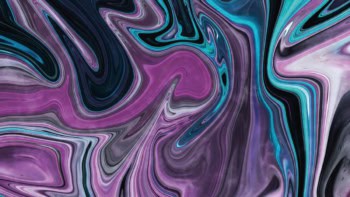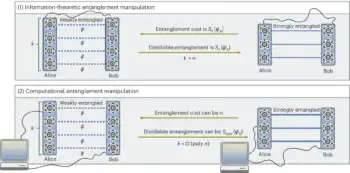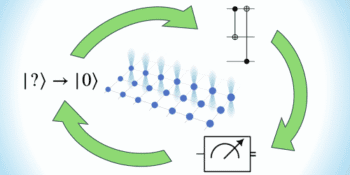
Superpositions of quantum states known as Schrödinger cat states can be created in “hot” environments with temperatures up to 1.8 K, say researchers in Austria and Spain. By reducing the restrictions involved in obtaining ultracold temperatures, the work could benefit fields such as quantum computing and quantum sensing.
In 1935, Erwin Schrödinger used a thought experiment now known as “Schrödinger’s cat” to emphasize what he saw as a problem with some interpretations of quantum theory. His gedankenexperiment involved placing a quantum system (a cat in a box with a radioactive sample and a flask of poison) in a state that is a superposition of two states (“alive cat” if the sample has not decayed and “dead cat” if it has). These superposition states are now known as Schrödinger cat states (or simply cat states) and are useful in many fields, including quantum computing, quantum networks and quantum sensing.
Creating a cat state, however, requires quantum particles to be in their ground state. This, in turn, means cooling them to extremely low temperatures. Even marginally higher temperatures were thought to destroy the fragile nature of these states, rendering them useless for applications. But the need for ultracold temperatures comes with its own challenges, as it restricts the range of possible applications and hinders the development of large-scale systems such as powerful quantum computers.
Cat on a hot tin…microwave cavity?
The new work, which was carried out by researchers at the University of Innsbruck and IQOQI in Austria together with colleagues at the ICFO in Spain, challenges the idea that ultralow temperatures are a must for generating cat states. Instead of starting from the ground state, they used thermally excited states to show that quantum superpositions can exist at temperatures of up to 1.8 K – an environment that might as well be an oven in the quantum world.
Team leader Gerhard Kirchmair, a physicist at the University of Innsbruck and the IQOQI, says the study evolved from one of those “happy accidents” that characterize work in a collaborative environment. During a coffee break with a colleague, he realized he was well-equipped to prove the hypothesis of another colleague, Oriol Romero-Isart, who had shown theoretically that cat states can be generated out of a thermal state.
The experiment involved creating cat states inside a microwave cavity that acts as a quantum harmonic oscillator. This cavity is coupled to a superconducting transmon qubit that behaves as a two-level system where the superposition is generated. While the overall setup is cooled to 30 mK, the cavity mode itself is heated by equilibrating it with amplified Johnson-Nyquist noise from a resistor, making it 60 times hotter than its environment.
To establish the existence of quantum correlations at this higher temperature, the team directly measured the Wigner functions of the states. Doing so revealed the characteristic interference patterns of Schrödinger cat states.
Benefits for quantum sensing and error correction
According to Kirchmair, being able to realize cat states without ground-state cooling could bring benefits for quantum sensing. The mechanical oscillator systems used to sense acceleration or force, for example, are normally cooled to the ground state to achieve the necessary high sensitivity, but such extreme cooling may not be necessary. He adds that quantum error correction schemes could also benefit, as they rely on being able to create cat states reliably; the team’s work shows that a residual thermal population places fewer limitations on this than previously thought.
“For next steps we will use the system for what it was originally designed, i.e. to mediate interactions between multiple qubits for novel quantum gates,” he tells Physics World.
Yiwen Chu, a quantum physicist from ETH Zürich in Switzerland who was not involved in this research, praises the “creativeness of the idea”. She describes the results as interesting and surprising because they seem to counter the common view that lack of purity in a quantum state degrades quantum features. She also agrees that the work could be important for quantum sensing, adding that many systems – including some more suited for sensing – are difficult to prepare in the ground state.

Cat qubits open a faster track to fault-tolerant quantum computing
However, Chu notes that, for reasons stemming from the system’s parameters and the protocols the team used to generate the cat states, it should be possible to cool this particular system very efficiently to the ground state. This, she says, somewhat diminishes the argument that the method will be useful for systems where this isn’t the case. “However, these parameters and the protocols they showed might not be the only way to prepare such states, so on a fundamental level it is still very interesting,” she concludes.



